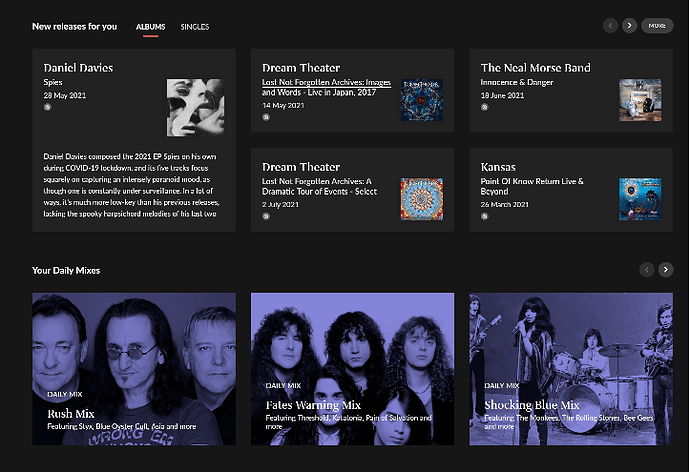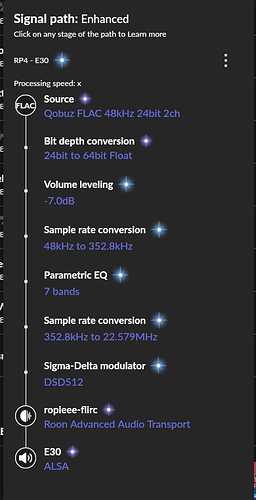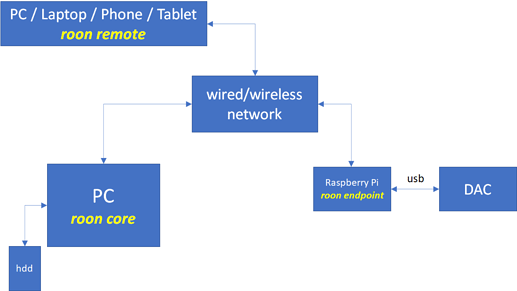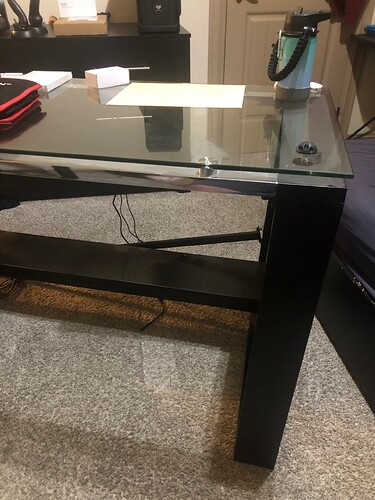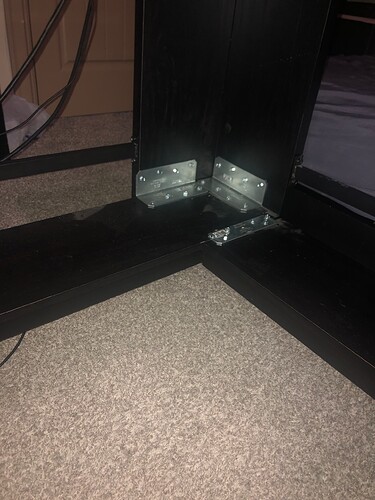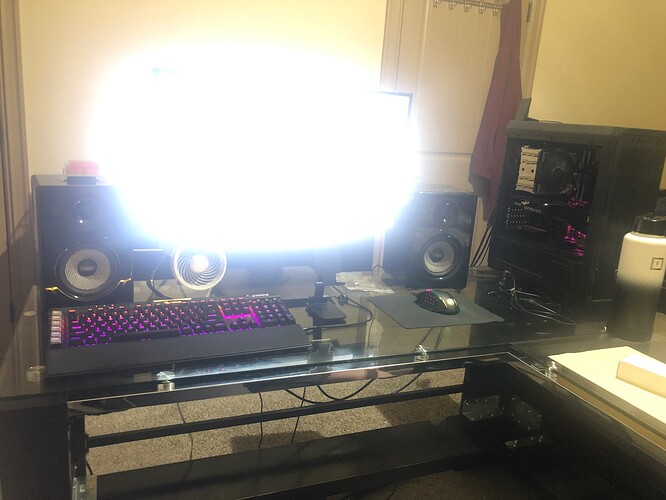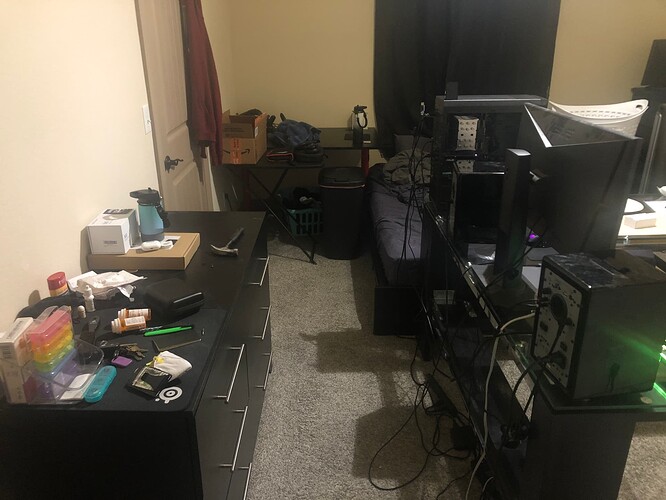Seems lots of people are reporting issues. It has their attention. I’m sure they’ll fix it.
Weird it worked for me day one, it’s as you scroll through the home page so can’t miss it, so if it’s not there, it’s not there. 3rd item on the scroll… recent activity, new releases, and then daily mix.
It’s funny how everyone does things differently. I find it such a chore to create “play lists” I stuggle. Sure I have some chill music and some test tracks etc, but for the most part I just shuffle play or shuffle play through genres if I’m feeling a little more focused and inclined for one thing over another.
I’m one of those people though that edits their albums and will only bring in the track I enjoy, the rest I keep as part of a full rip backup. So since the tracks that make it to Roon are all tracks I enjoy, the shuffle is much more enjoyable. I also find that the algorithm gets better at finding music you like since it gets to look through a much more curated database in my library. Horses for courses I guess.
My Daily Mixes disappeared overnight. 
Oh no, sorry to hear that. Like you mentioned it does seem to be a more widespread issue and less isolated to a few. I am confident it will be worked out eventually. Roon is aware of an issue that affects those using a streaming service (Tidal/Qobuz). I expect it has something to do with the hooks into the services that the algorithm is using to build lists, but I don’t know I am not a programmer beyond simple Korn, Borne and Bash scripting for *nix administration - and haven’t done much of that either in the last 15 yrs.
Edit:
Funny thing is that on 1 of 4 Windows Remotes (Win 10 pro 21H1) the daily mixes appeared today - but I’m not counting on it to remain
Edit 2:
After goin to each individual remote and restarting the system, not just roon - all 4 are now showing (for now) the Daily Mix’s.
Oh, I’m not bothered at all. I will probably never use the Daily Mixes, just like I never use Roon Radio.
I only listen to whole albums. I have the world’s most convoluted system for rotating through my collection. It involves a big spreadsheet sorted by a replay date that is weighted by the rating of the album. It even involves the Fibonacci Sequence to scale the lowest rated albums to be played much less frequently than highly rated albums. This system has evolved over the last 20 years but addresses three of my biggest pain points as a music lover:
- I never stare at my collection wondering what I want to listen to next.
- I get to listen to the albums I most enjoy more frequently but not so frequently that I burn out on them.
- My listening system has no dependence on the software I am using. As long as I can pick an album and play it, it doesn’t matter if I’m using Roon, Plex, iTunes, WInAmp or a record player.
You sir are an Evil Gnome indeed - LOL
I can only aspire to someday to be as coordinated as that. Seriously, I admire your dedication to your music and playback methodology.
Not intending to blast this thread today, but as I’ve been attempting to decipher and triage the minor quirk as discussed recently, it bread another question.
For those of you with multiple zones - do you create a different roon profile for any of those zones, based on the setup in that room, or the type of music you play there (or am I the only one that selects different genre and tracks based on playback equipment in the room, or what you are doing there?)
That’s because it was night time… they’re called DAILY mixes after all. 
The second option. The play history and lists are automatically kept separated by for each endpoint. Unless you want to share or migrate it to a different room or endpoint.
Each of my listening stations, Deskltop and 2 Channel have their own dedicated hardware and endpoint, there’s a lot of functionality with Roon to have multiple zoners, rooms, systems, but I’m pretty simple with that. I’m trying to friend Bezo’s ex wife on Facebook, it it works out, my Roon situation may expand a bit, you know what I’m sayin?
Roon DSP … such a love / hate relationship!
I’ve recently revisited Roon DSP, and I think I’m finding a place for it in my setup - little desktop speakers - specifically my iLoud Micro Monitors. In general I’m a "less is more " audio chain philosopher: the shorter the Signal Path list in Roon the better. And I stand by this for my headphone listening. But lately my iLoud Signal Path has turned into a total abomination:
… and I think I like it.  Here’s my thought process:
Here’s my thought process:
Volume Leveling - most of the listening is low volume while I work. Having a song jump up/down from track to track is very distracting. And with this set to Auto it keeps me from tweaking volume all day. So a win for practicality. Not a win for fidelity purity. It also doubles as headroom management, avoiding the need for a constant -3dB to prevent the DSP from clipping.
Parametric EQ - I’ve found an EQ for the iLouds that I really like. It takes some of the mid-bass bleed out, as well as tones down some treble spikes that are obnoxious on some songs. I really fell for this EQ. Once I committed to keeping the EQ, it was easy to add more. I needed something to reduce volume for headroom management, so Volume leveling. And at that point, why not use sample rate conversion? I’m in deep already…
Sample rate conversion - for some reason Roon does a PCM up sampling before modulating it to DSD. Must be something about the DSD conversion process, I believe most DACs do the same up-sample/modulation process internally. Using this in Roon has been a back-and-forth for me. It’s not a practical mater like the Volume Leveling or an obvious sound difference like Parametric EQ. But I noticed that the DAC I’m using (Toping E30) has a DSD bypass feature, meaning if you feed it DSD, and don’t try to change volume on the DAC, it will completely bypass the internal signal processing and pass the raw DSD stream straight into the output filter. I think I hear an improvement doing this with Roon. I’m 99% certain the processing in the E30 does the same thing: PCM up-sample followed by delta-sigma modulation into DSD. Roon, using my Mac Mini with a 6 core i5 and 32GB of RAM, probably does better than the small internal DSP chip in the E30. So I’ve gone with it… and no complaints. It sounds at least as good, maybe a little smoother. Why DSD512? Why not!  It’s obviously 2x as good as DSD256. And don’t start me on the dumpster fire of DSD128! LOL! Just kidding!
It’s obviously 2x as good as DSD256. And don’t start me on the dumpster fire of DSD128! LOL! Just kidding!
Then from there it’s ALSA through the Raspberry Pi 4, and USB into the Toping E30.
To complete the picture, I use a Schiit Sys as the volume control between the E30 and iLoud Micro Monitors. This way I get DSD bypass in the DAC (volume control requires PCM conversion). And I can just leave the iLoud volume set at mid point (which is shockingly loud).
Again, I still haven’t found a DSP setup on my headphone chain that I like. And to be honest I quite trying. I like running that chain “bit-perfect” with the source, getting the actual sound of the DAC, Amp, and Headphone, no funny business.
Anyone else running an abomination Signal Path with success?
I have not tinkered with that or any upsampling but it looks interesting - kudos to you for taking a plunge!
Oh and for the write up 
The “superpower” side of my ADHD kicked in this weekend, and I ended up with crazy hyper focus on Roon, DSP, sample rate conversions, PCM vs DSD, and HQPlayer. I’m pretty sure my family thought I lost my damn mind (it wasn’t lost, just stuck in a very narrow box focusing).
The above signal chain has now gone “full retard” and I replaced it with:
[NOTE, this is a good example of WHAT NOT TO DO! If you are going to run HQPlayer do all DSP in HQPlayer. Half roon / half hqplayer is a huge mess. don’t do this!]
Still using volume leveling, it helps keep playlists from blowing my ears off during the day going from song to song. Kept the parametric EQ to cleanup a few points with the iLoud Micro Monitors frequency response. But instead of using Roon for PCM to DSD conversion I switched over to HQPlayer. I didn’t realize you could have Roon do some pre-processing (volume leveling, EQ adjustment) and then pass that result as 64bit floating-point data to HQPlayer for modulation to DSD. Really cool feature.
Interesting features in HQPlayer are to learn about the various reconstruction filters and Delta-Sigma modulation schemes. The reconstruction filter is one part of where a DAC gets its sound. By changing to different reconstruction filters, and then modulating to DSD, you end up noticeably changing the sound of your DAC. The “trick” here though is having a DAC that supports “DSD bypass” - where it just takes the input DSD stream and passes it straight out through the DSD low pass filter. This way you don’t end up with your DAC “re-converting” back to PCM for filtering or volume adjustment, and thereby changing the sound.
I’m not convinced I’ve found the filter and modulation scheme I like best, but for now I’m running with poly-sinc-ext2 filter, ASDM7EC modulation, and outputting DSD256. Going to DSD512 made my poor Mac Mini sound like a hover craft taking off (I didn’t even know the fan could run that loud).
Getting HQPlayer up and running properly with Roon was a real chore. I’m tempted to start a separate thread on HQPlayer to give a walkthrough for anyone on Roon who wants to try it, as well as share experiences trying different settings.
Sound wise, it’s not “night and day” comparing Roon to HQPlayer for PCM to DSD conversion. But there is a very noticeable improvement in my setup when I do this. The spacing in the music is better: separation, sound stage, depth. The tamber seems to be noticeably improved as well - instruments sound more real to my ear.
Again, I’ll note that the key is using a DAC that supports DSD bypass. Without this your DAC will re-process the bitstream (convert back to PCM) and likely eliminate any real benefits of HQPlayer (or Roon DSD conversion for that matter).
@Delta9K (and others)
Alright. So, using my media hdd on my pc as the roon core, and my pc as the control point, I could stream roon over to an rpi4+pi2aes using ethernet and an additional network card in my pc as the roon bridge? what downsides does this bring? I plan on using the rpi4+pi2aes combo as a replacement for usb audio in my signal chain/system. Being able to still run roon from my computer through the win10 version on roon would be awesome so that I don’t need to directly control 2 devices or file manage outside of my actual pc. Am I understanding everything correctly?
(this won’t actually be done yet, it is a years-in-the-future thing but I have nothing better to do but plan and it entertains me to plan for things I enjoy)
I didn’t bother to read this as I have no idea what relevance it has to me, but having adhd myself i skimmed it and saw that you have adhd too. poor fucker! hyperfixation bursts are a blessing of determination/diligence and a curse of avoiding deep detail unless necessary lol
yeah, ignore 90% of this thread until you have a stable Roon streaming system up and running.
yeah, 75% super power, 25% train wreck. I try to focus on the super power side ![]()
I have no medication for it right now (plus multiple crippling side effects of the adhd) so i’m like 90% train smash rn. Working on it tho, picking up ritalin tomorrow!
I really hope it goes well for you. I take Adderall every day and it makes a HUGE difference for me. The other thing I focus on is diet and exercise - so much of brain chemistry can be influenced that way. When I’m eating carefully, working out regularly, I’m the best version of myself. And the Adderall gives me just a little more control on top of this.
But back on topic, regarding your Roon setup, a picture will help:
The same PC can be used as the Core and Remote, but it’s usually not recommended.
Doe’s this make sense?
This just happened… due to anxiety and adhd… whole table is busted but possibly fixable
Update: Got the ritalin, and got the desk back together and everything in place!
-Ignore the sun
yes it makes sense, with a few caveats. Why it not recommended to use the roon core as the remote? it just seems like the natural choice to me. I’m also not sure how to hook up to the rpi4 through the internet from the pc (and remote too??? ugh)
What would be the benefit of using a tablet running the roon app as the remote vs my computer running the roon app?
You can, it works fine. Many people will put the Roon server in another room so they don’t hear the fans. But nothing stops you from using the Core as the Remote.
It’s just over your local network. Put everything on the same network and if it’s configured correctly the Core will detect the endpoints.
But…
If you connect you DAC via USB to your Core (or Remote) you don’t need an endpoint. Roon will detect the DAC and allow you to stream to it. The Roon endpoint is really to facilitate moving the Core to another room so you can stream over your network.
